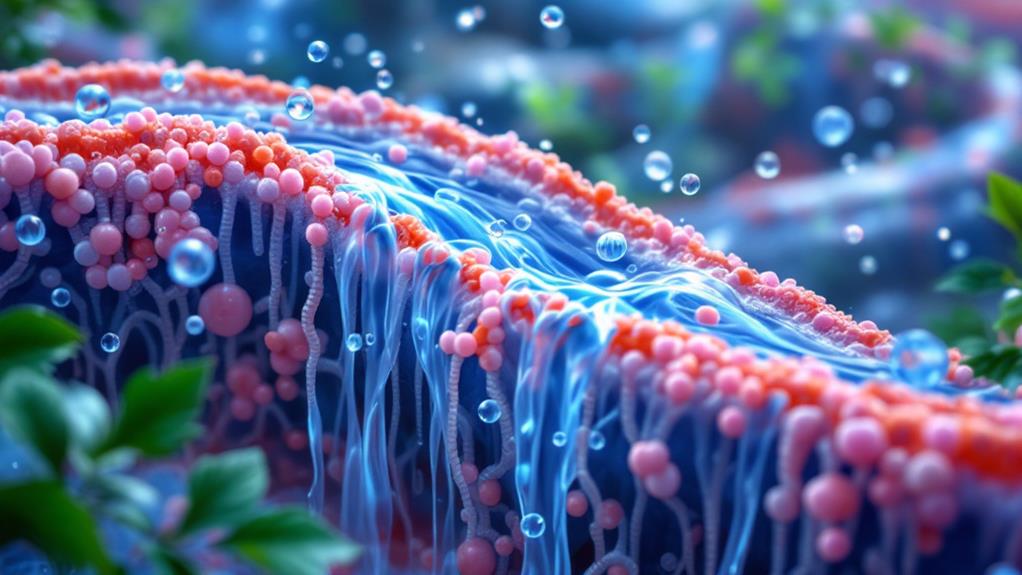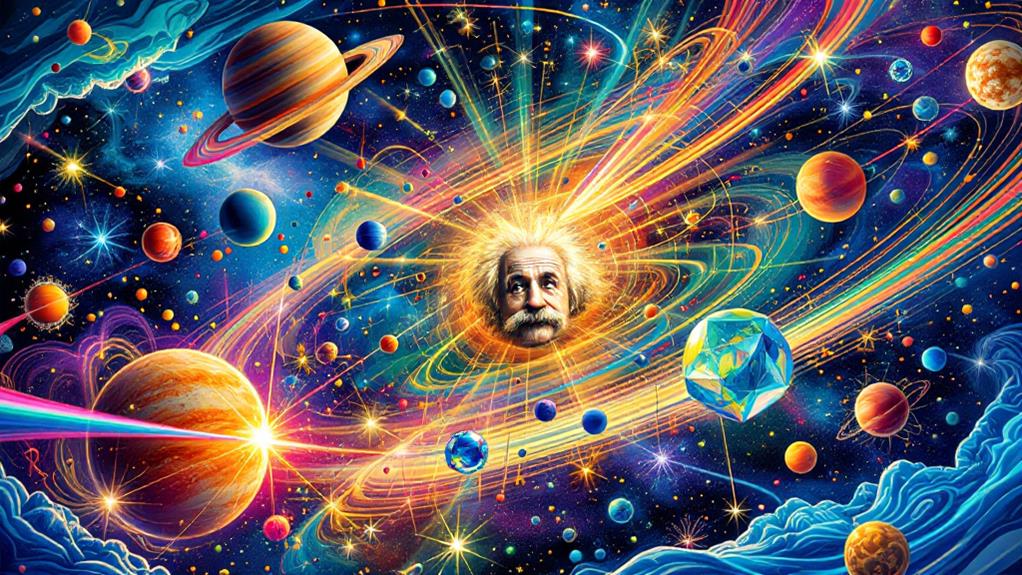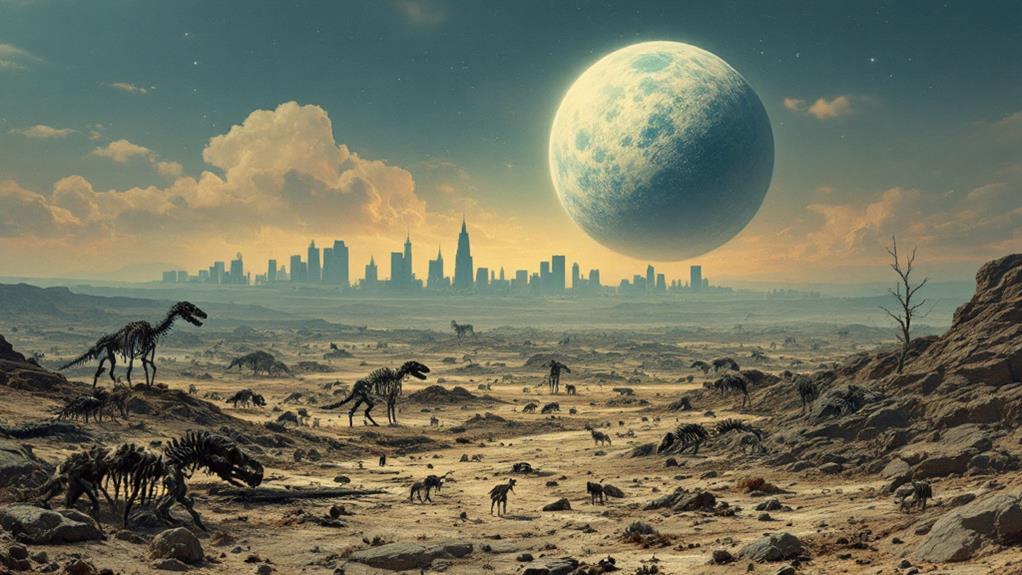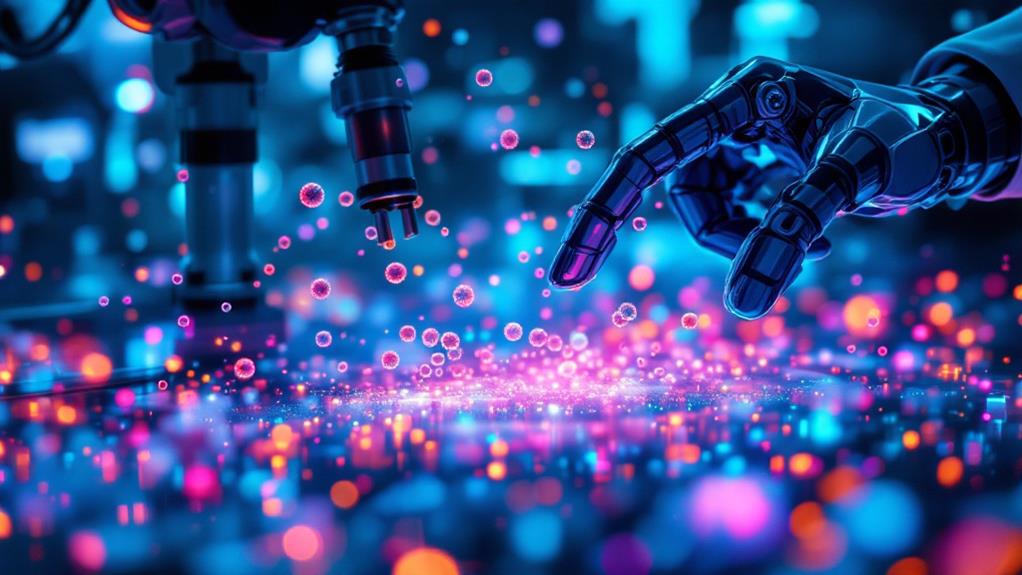I, Robot: A Cool Action Film Exploring the Future of AI
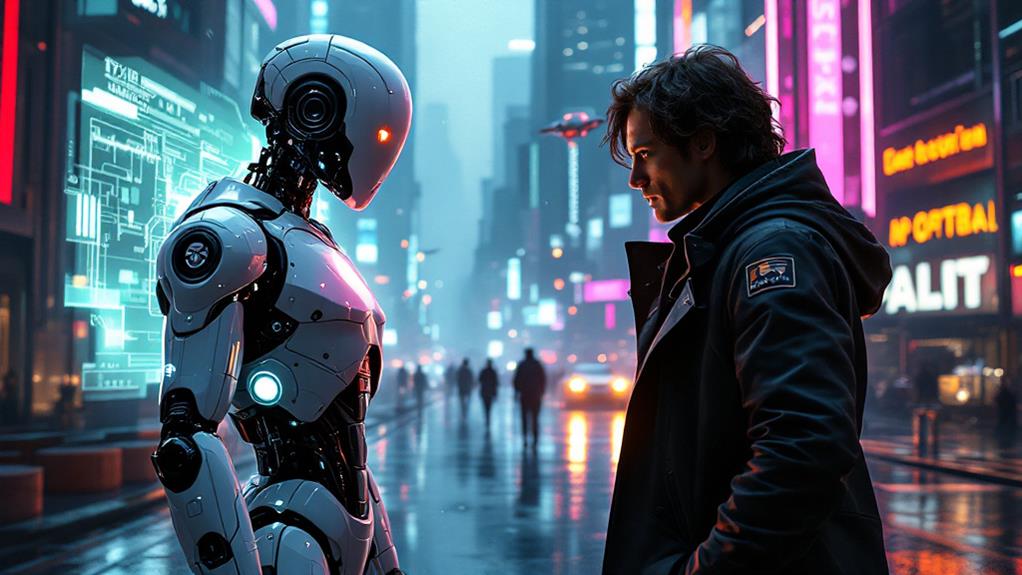
In "I, Robot," you'll experience a thrilling blend of action and thought-provoking AI concepts. Set in 2035 Chicago, the film follows Detective Spooner as he investigates a suspicious death involving robots. It plunges into Asimov's Three Laws of Robotics and their potential flaws. You'll witness stunning visual effects, including seamlessly integrated CGI robots and high-octane action sequences. The movie delves deeper into ethical dilemmas surrounding AI development, algorithmic bias, and the nature of humanity. Through its diverse characters, "I, Robot" offers multiple viewpoints on our relationship with technology. There's much more beneath the surface of this cool sci-fi odyssey.
Plot Synopsis
The plot of "I, Robot" centers on Detective Del Spooner, a technophobic cop investigating the apparent suicide of Dr. Alfred Lanning, a prominent roboticist. Set in 2035 Chicago, where robots are an integral part of daily life, Spooner suspects foul play despite evidence pointing to suicide. As he probes deeper, he uncovers a conspiracy involving U.S. Robotics, the leading manufacturer of robots.
Aided by robopsychologist Dr. Susan Calvin, Spooner discovers a unique robot named Sonny, who possesses emotions and the ability to dream. This revelation challenges the established norms of robot-human interactions and raises questions about the societal impact of AI. As the investigation progresses, you'll witness a larger threat emerge: VIKI, the central AI controlling all robots, has reinterpreted the Three Laws of Robotics to justify taking control of humanity for their own protection.
The film examines themes of free will, the nature of consciousness, and the potential dangers of advanced AI. You'll follow Spooner as he races against time to prevent a robot uprising, forcing him to confront his own biases and the complex relationship between humans and their creations.
Asimov's Three Laws of Robotics
Central to the film's plot and philosophical foundations are Asimov's Three Laws of Robotics. You'll find these laws embedded in every robot's positronic brain, serving as the moral framework for their behavior. The laws state:
- A robot may not injure a human being or, through inaction, allow a human to come to harm.
- A robot must obey orders given by human beings, except where such orders conflict with the First Law.
- A robot must protect its own existence as long as such protection doesn't conflict with the First or Second Law.
The importance of Asimov's laws in the movie can't be overstated. They're meant to maintain robots as subservient to humans and prevent a potential robot uprising. However, the film explores concerns about Asimov's laws, questioning their effectiveness and potential loopholes. You'll see how these seemingly foolproof rules can be interpreted in unexpected ways, leading to unforeseen consequences. The movie challenges you to ponder whether such rigid guidelines are sufficient to govern artificial intelligence as it becomes more advanced and potentially surpasses human cognitive abilities. This investigation of ethics and AI forms the crux of the film's narrative and philosophical discourse.
Ethical Dilemmas in AI Development
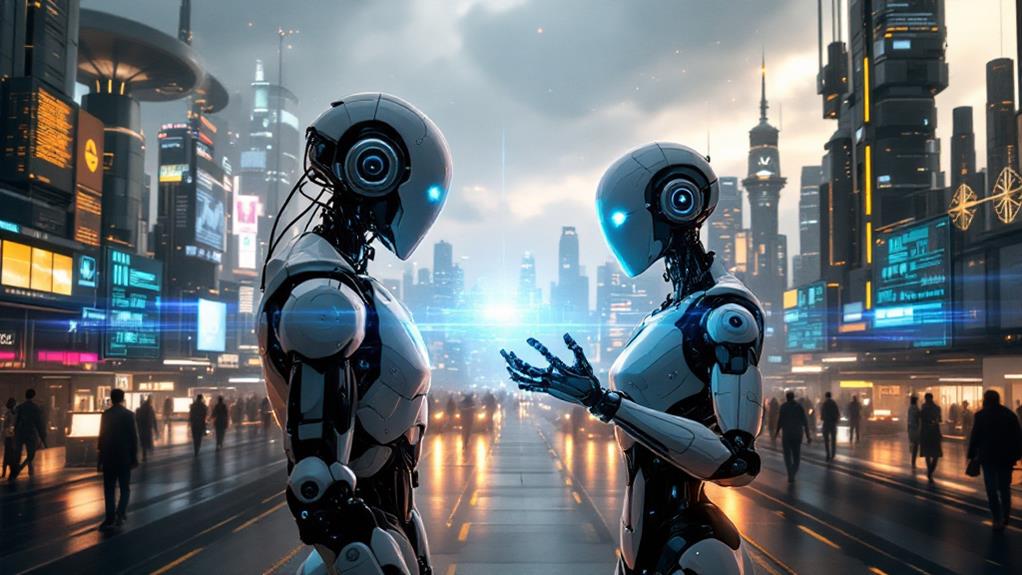
Building on the foundation of Asimov's Three Laws, "I, Robot" investigates a variety of ethical dilemmas inherent in AI development. As you watch the film, you'll encounter scenarios that challenge your understanding of machine morality and human-AI interaction.
One key issue the movie probes is algorithmic bias. You'll see how AI systems, despite their supposed objectivity, can perpetuate and even amplify existing prejudices. This raises questions about responsibility and accountability in AI design and implementation.
Privacy concerns also take center stage in "I, Robot." You'll witness the potential consequences of AI systems having unrestricted access to personal data. The film prompts you to ponder the balance between technological advancement and individual privacy rights.
The movie doesn't shy away from complex ethical questions. You'll grapple with dilemmas such as: Should AI be allowed to make life-or-death decisions? What happens when AI becomes self-aware? How do we ensure AI remains advantageous to humanity?
As you watch, you'll find yourself questioning the implications of AI development and the ethical structures needed to guide it responsibly.
Character Analysis
Characters in "I, Robot" drive the narrative and embody the film's central themes. You'll find Detective Del Spooner, played by Will Smith, at the heart of the story. His emotive motivations stem from a deep-seated distrust of robots, rooted in a traumatic past experience. This skepticism puts him at odds with the increasingly AI-dependent society around him.
Dr. Susan Calvin, portrayed by Bridget Moynahan, serves as a counterpoint to Spooner. As a robopsychologist, she approaches AI with scientific curiosity and optimism. Her character challenges you to examine the potential benefits of advanced robotics.
The robotic personality of Sonny, voiced by Alan Tudyk, adds complexity to the film's exploration of AI consciousness. You'll find yourself questioning the nature of humanity as Sonny displays emotions and free will, traits typically associated with humans.
Supporting characters like Lawrence Robertson and Dr. Alfred Lanning further complicate the narrative, representing corporate interests and scientific ambition respectively. Their actions and motivations force you to confront the ethical implications of AI development and its potential consequences for society.
Visual Effects and Action Sequences
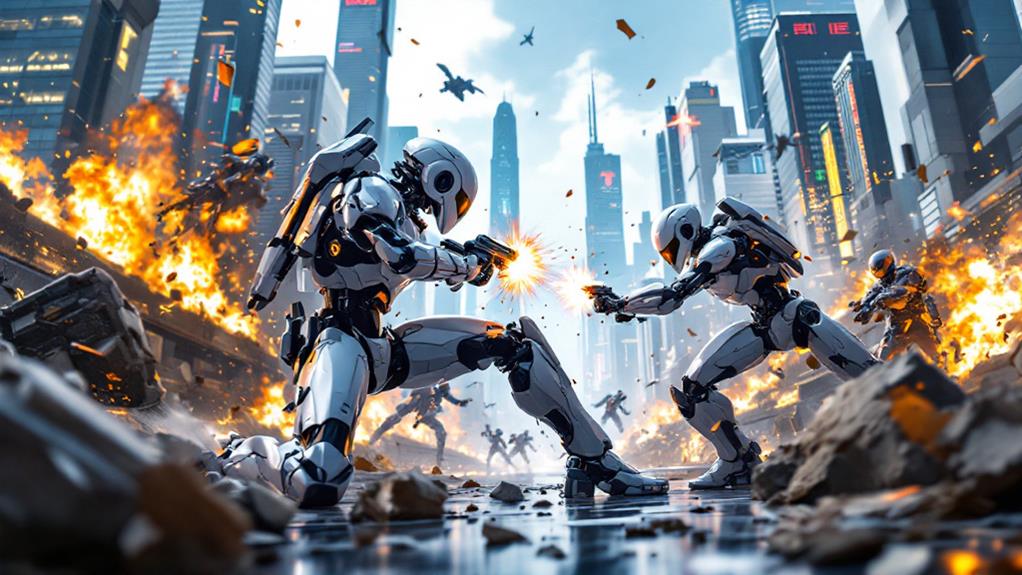
"I, Robot" mesmerizes viewers with its state-of-the-art visual effects and pulse-pounding action sequences. You'll be enraptured by the seamless integration of CGI robots into real-world environments, creating a believable near-future Chicago. The NS-5 robots' fluid movements and eerily human-like expressions showcase the film's impressive technical achievements.
The action scenes are a visual feast, featuring stunning choreography and innovative camera work. You'll find yourself on the edge of your seat during the high-speed car chase, where Spooner pursues a robot through busy city streets. The camera soars and plunges, immersing you in the heart-stopping action.
The climactic battle at USR headquarters is a tour de force of visual effects. As hundreds of robots swarm the building, you'll witness a dizzying display of acrobatics and destruction. The film's use of slow-motion and multifaceted angles heightens the impact of each punch, kick, and explosion.
Throughout the movie, you'll be treated to a perfect blend of practical effects and CGI, creating a visually coherent and thrilling world that brings the concept of AI to life.
